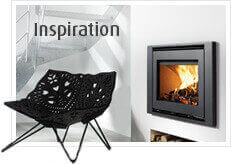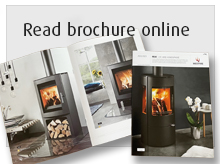Plan correctly from the start
It is important to choose the right size of stove, and to position it correctly within the house, in order to take into account the layout of the building and the stove’s role as an energy source.
The first step is to estimate the number of square metres to be heated by the stove.
You also need to take into consideration whether the stove is to function as the primary source of heat in the room, or whether it is merely intended to supplement other sources of heat such as oil fired central heating or electric heating.
The heat from a stove is best utilised if it is the correct size for the intended purpose. Generally speaking, the stove should not be too large. It is easier, more environmentally friendly and better in terms of fuel economy to use a stove with a smaller burning chamber and lower output than a large stove with a higher output. A large stove will need the same temperature in the burning chamber and in the chimney as a smaller stove in order to burn correctly, and the room may therefore become too warm. A stove’s output is measured in kilowatts (kW). As a rule of thumb, 1 kW heats approx. 10 square metres if the house is poorly insulated. If the house is well insulated, 1 kW will heat approx. 20 square metres.
New possibilities
There are more options available to customers these days than ever before. New models have appeared on the market, and tried-and-tested stoves have come to the fore once again. Essentially, you can choose between three types: free-standing steel stoves, which generate radiant heat, built-in fireplaces, which generate radiant heat in several ways, and convection stoves, which distribute warm air throughout the room according to a unique principle.








